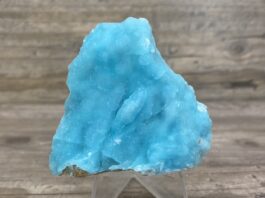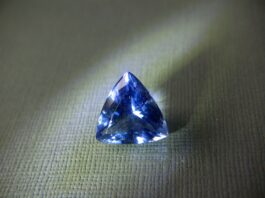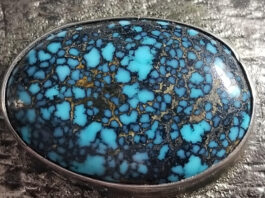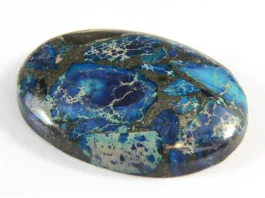Gaia stones, also known as Gaia’s Tears or Green Obsidian, are a type of volcanic glass infused with minerals. They derive their name from Gaia, the Greek goddess personifying the Earth. Gaia stones are typically formed through the rapid cooling of lava flows, which trap mineral impurities within the glass matrix. The distinct green coloration of Gaia stones is due to the presence of various minerals such as iron and magnesium. This unique composition is believed to imbue the stones with special properties that resonate with the natural world.

The history and origin of Gaia stones trace back to ancient times when indigenous cultures utilized volcanic glass for various ceremonial and spiritual purposes. In contemporary times, they have gained popularity in the metaphysical community for their purported ability to facilitate connection with the Earth’s energy, promote emotional healing, and enhance spiritual awareness.
While Gaia stones are often associated with New Age spirituality and alternative healing practices, their appeal extends beyond esoteric beliefs. Many individuals are drawn to their natural beauty and the idea of incorporating a piece of the Earth’s essence into their lives. Whether used for meditation, energy work, or simply as decorative items, Gaia stones continue to captivate enthusiasts seeking harmony with the natural world.
Contents
Formation Process

Gaia stones, also known as Green Obsidian, are formed through a fascinating natural process involving volcanic activity and rapid cooling. Here’s an overview of the formation process:
- Volcanic Activity: The formation of Gaia stones begins with volcanic activity. When magma rises to the Earth’s surface during volcanic eruptions, it often contains a variety of dissolved gases and mineral impurities.
- Lava Flow: During an eruption, molten lava flows out onto the Earth’s surface. As the lava flows, it begins to cool and solidify.
- Rapid Cooling: The key to the formation of Gaia stones is rapid cooling. When lava cools quickly, as is often the case with lava flows that come into contact with air or water, it solidifies into a type of volcanic glass known as obsidian. This rapid cooling prevents the formation of large mineral crystals, resulting in an amorphous, glassy texture.
- Mineral Infusion: As the lava cools and solidifies into obsidian, it can trap mineral impurities within its glassy matrix. These impurities give Gaia stones their distinctive green coloration. Minerals such as iron and magnesium are commonly responsible for the green hue of Gaia stones, although other minerals may also contribute to variations in color and appearance.
- Natural Weathering: Over time, Gaia stones may undergo natural weathering processes, such as exposure to wind, water, and other environmental factors. This can further shape and refine their appearance, but the basic structure of the stone remains unchanged.
Overall, the formation of Gaia stones is a testament to the powerful forces at work within the Earth, combining volcanic activity with the intricate interplay of minerals to produce these unique and beautiful natural creations.
Composition and Physical Properties

The composition and physical properties of Gaia stones, also known as Green Obsidian, are influenced by their volcanic origins and mineral content. Here are the key aspects of their composition and physical characteristics:
- Composition: Gaia stones are primarily composed of volcanic glass, specifically obsidian. Obsidian is a naturally occurring igneous rock formed from the rapid cooling of lava. What distinguishes Gaia stones from other types of obsidian is the presence of mineral impurities, particularly those responsible for their green coloration. Common minerals found in Gaia stones include iron, magnesium, and other trace elements.
- Color: The most notable physical characteristic of Gaia stones is their green color. This coloration is a result of the presence of minerals such as iron and magnesium within the glassy matrix of the obsidian. The intensity and shade of green can vary depending on factors such as the specific mineral content and environmental conditions during formation.
- Transparency: Gaia stones typically have a translucent to opaque appearance due to the amorphous structure of obsidian. While some specimens may exhibit greater transparency than others, most have a glassy sheen that reflects light.
- Texture: The texture of Gaia stones is smooth and glassy, characteristic of obsidian. However, variations in texture can occur depending on factors such as the presence of mineral inclusions or the occurrence of natural weathering processes.
- Hardness: Obsidian, including Gaia stones, is relatively hard and has a rating of 5 to 5.5 on the Mohs scale of mineral hardness. This means it is harder than most types of glass but can still be scratched by harder materials such as quartz or corundum.
- Density: Gaia stones have a density similar to that of other types of obsidian, typically ranging from 2.4 to 2.6 grams per cubic centimeter.
- Fracture: Obsidian, including Gaia stones, exhibits conchoidal fracture, meaning it breaks along smooth, curved surfaces reminiscent of seashells. This fracture pattern is characteristic of glassy materials and is a result of the absence of crystalline structure.
Overall, Gaia stones possess a unique combination of properties that make them visually striking and spiritually significant to many individuals interested in crystal healing and metaphysical practices.
Types of Gaia Stones

There are a few different types of Gaia stones, each with its own distinct characteristics. While they all share the common feature of being green obsidian infused with minerals, variations in color, texture, and origin give rise to different types. Here are some notable ones:
- Classic Gaia Stones: These are the most common type of Gaia stones and are characterized by their deep green coloration. They often exhibit a smooth, glassy texture and may contain mineral inclusions that add to their visual appeal.
- Rainforest Gaia Stones: Rainforest Gaia stones are a variant known for their vibrant green hues reminiscent of lush rainforests. They may feature patterns or streaks of lighter and darker green, resembling the foliage of a dense forest canopy.
- Earthquake Gaia Stones: These stones are named for their association with seismic activity and are believed by some to harness the energy of the Earth’s movements. Earthquake Gaia stones may have unique patterns or fractures resulting from geological forces, giving them a distinct appearance.
- Volcano Gaia Stones: Volcano Gaia stones are thought to be imbued with the energy of volcanic eruptions. They may exhibit fiery streaks or specks within their green matrix, symbolizing the molten lava from which they originated.
- Atlantisite: While not technically a Gaia stone, Atlantisite is a green and purple combination of serpentine and stichtite minerals. It is sometimes associated with Gaia energy due to its green color and connection to the Earth.
- Dragonstone: Another variation often associated with Gaia stones is Dragonstone, which is a green and black combination of epidote and piemontite minerals. Its name evokes imagery of ancient dragons and primal energies.
These are just a few examples of the types of Gaia stones that exist within the metaphysical community. Each type is believed to have its own unique properties and associations, making them sought after for various spiritual practices and energy work.
Uses and Applications

Gaia stones, with their connection to the Earth’s energy and their unique properties, are believed to have a wide range of uses and applications within spiritual and metaphysical practices. While their efficacy is largely subjective and may vary from person to person, here are some common uses and applications of Gaia stones:
- Grounding and Centering: Gaia stones are often used for grounding and centering practices, helping individuals feel more rooted and connected to the Earth. Holding or meditating with Gaia stones can promote a sense of stability and balance, especially during times of stress or upheaval.
- Healing and Cleansing: Many people believe that Gaia stones possess healing properties that can help cleanse and balance the body, mind, and spirit. They may be used in energy healing practices such as Reiki or crystal healing to clear negative energy and promote overall well-being.
- Spiritual Growth and Awareness: Gaia stones are thought to enhance spiritual growth and awareness by facilitating a deeper connection to the natural world and the energies of the Earth. Meditating with Gaia stones or incorporating them into spiritual rituals can help individuals attune to higher frequencies and expand their consciousness.
- Protection and Shielding: Some individuals use Gaia stones for protection and shielding against negative energies or psychic attacks. Placing Gaia stones in the home or carrying them as talismans may create a protective barrier and ward off unwanted influences.
- Environmental Healing: Because of their association with the Earth’s energy, Gaia stones are sometimes used in environmental healing practices aimed at restoring balance and harmony to the natural world. Meditating with Gaia stones while focusing on environmental intentions or placing them in areas of ecological concern are examples of how they may be used for this purpose.
- Chakra Balancing: Gaia stones are believed to resonate with the heart chakra, which governs love, compassion, and harmony. They may be used to balance and align the heart chakra, promoting emotional healing and openness to love.
- Manifestation and Intention Setting: Like other crystals, Gaia stones are often used in manifestation and intention setting practices. By programming the stones with specific intentions and goals, individuals may amplify their manifestation efforts and bring their desires into reality.
These are just a few examples of how Gaia stones are used and applied in various spiritual and metaphysical contexts. Ultimately, the ways in which individuals choose to work with Gaia stones depend on their personal beliefs, intentions, and experiences.
Locations where Gaia stones are found

Gaia stones, also known as Green Obsidian, are primarily found in specific geological regions where volcanic activity has occurred. While they are not as widely distributed as some other types of obsidian, there are several locations around the world where Gaia stones can be found. Some of these locations include:
- United States (Nevada): The most well-known source of Gaia stones is the region near Tonopah, Nevada. Here, deposits of green obsidian can be found within the Candelaria Hills, where volcanic activity has occurred in the past. Tonopah is often referred to as the primary location for obtaining Gaia stones.
- Mexico (Jalisco): Another notable source of Gaia stones is located in the state of Jalisco, Mexico. Deposits of green obsidian can be found in various areas within the region, including near the town of San Martin Hidalgo. Mexican Green Obsidian shares many similarities with Gaia stones from Nevada and is sought after by collectors and enthusiasts.
- New Zealand: Green obsidian, including varieties similar to Gaia stones, has been reported in certain areas of New Zealand. These deposits are associated with volcanic activity in the region and are sometimes used in local lapidary and jewelry-making endeavors.
- Other Locations: While Nevada and Mexico are the primary sources of Gaia stones, green obsidian deposits can potentially be found in other volcanic regions around the world. However, they are less commonly reported, and specific locations may vary depending on geological factors.
It’s important to note that obtaining Gaia stones, especially in their natural, raw form, may require permission from landowners or authorities, as collecting specimens from certain areas may be restricted or prohibited. Additionally, due to the popularity of Gaia stones in the metaphysical and crystal healing communities, they are often available for purchase through various retailers and online sources, offering enthusiasts access to these unique and cherished crystals.






